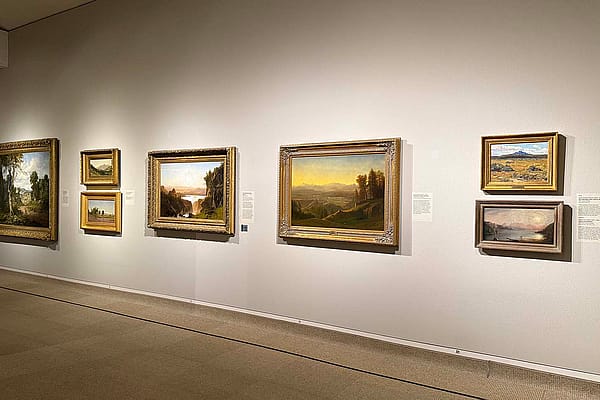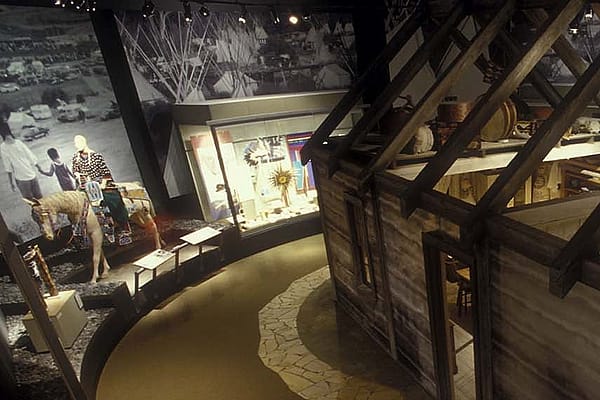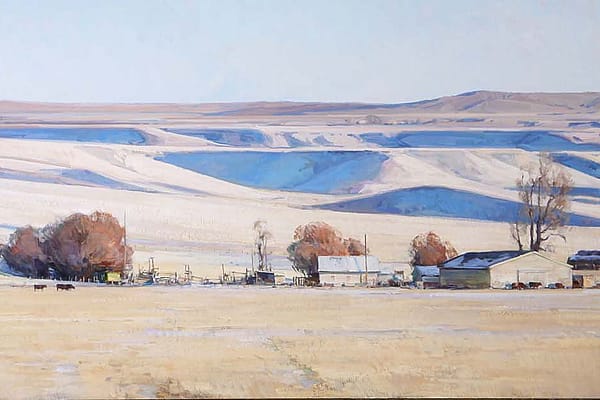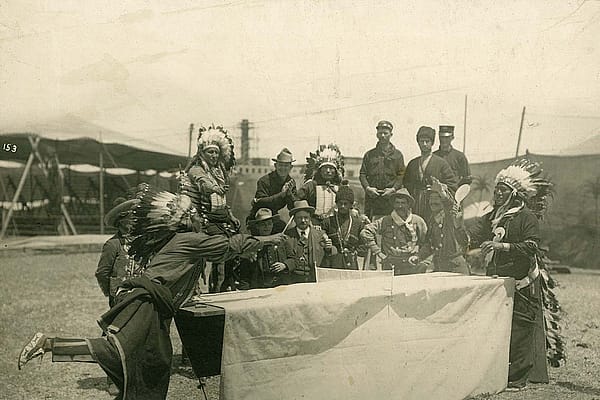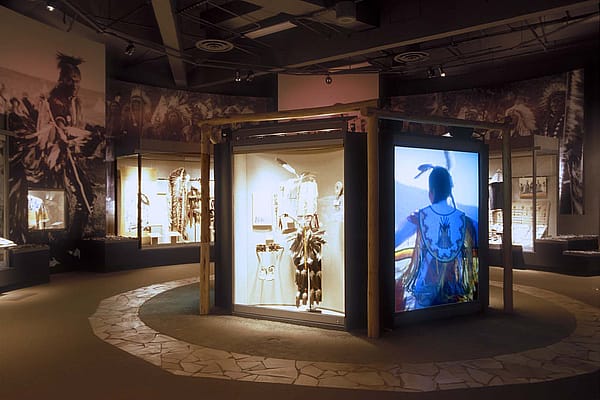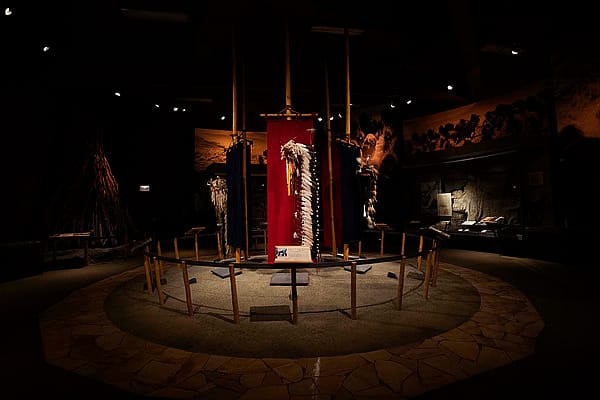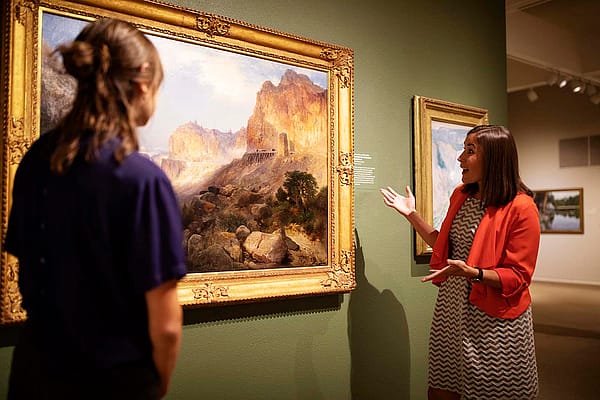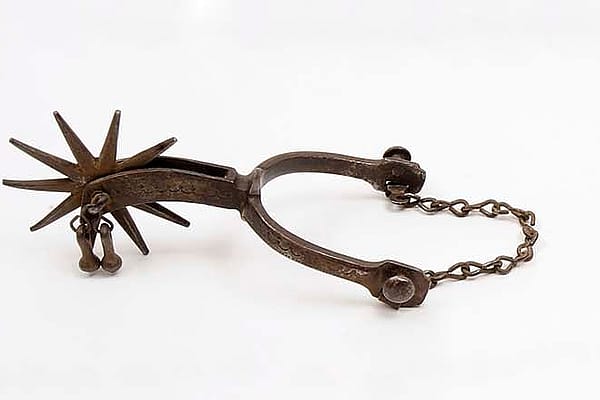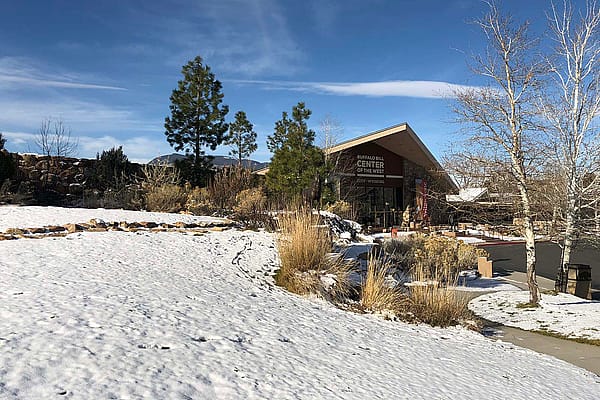Bierstadt: Bison as a Symbol of a Changing West
In the 1860s, many Americans preferred to imagine an empty West, ready for waves of new settlers.
In Bierstadt’s early large-scale paintings, he often portrayed the American West as a beautiful place, home to bustling communities of Native Americans.
Critics began to rebuke Bierstadt for including Indigenous peoples in his depictions of the region. In response, Bierstadt largely stopped portraying Native Americans in his western landscapes. Instead, he populated his paintings of wide open spaces with bison, invoking the animal as a symbol of a changing region.
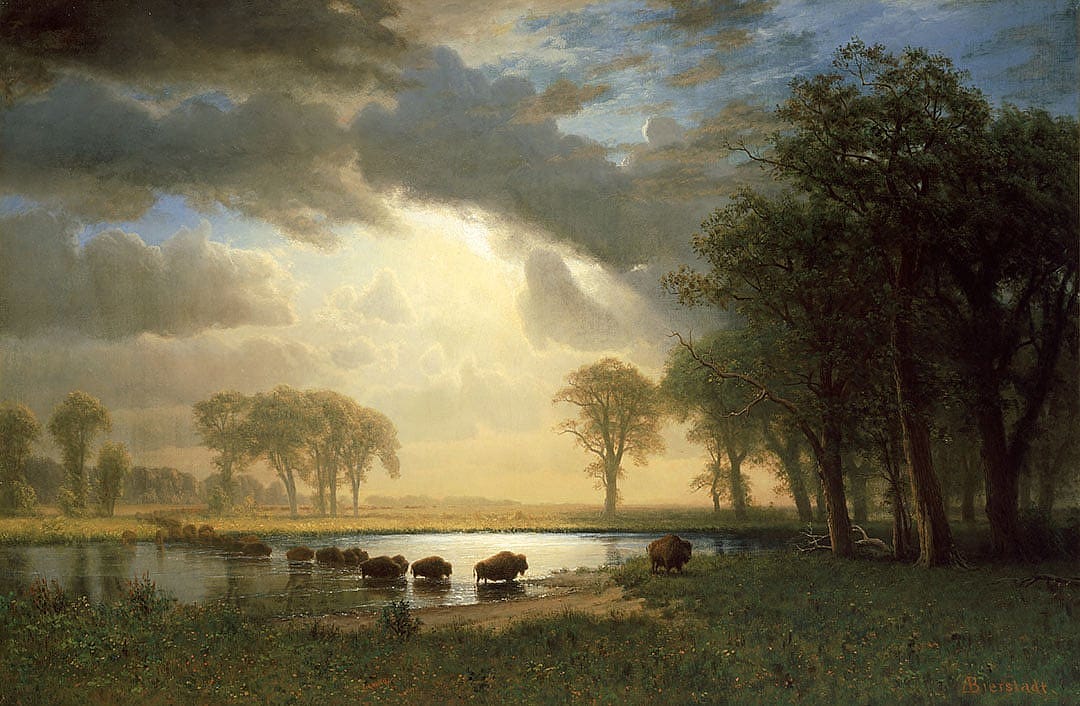
Written By
Nancy McClure
Nancy now does Grants & Foundations Relations for the Center of the West's Development Department, but was formerly the Content Producer for the Center's Public Relations Department, where her work included writing and updating website content, publicizing events, copy editing, working with images, and producing the e-newsletter Western Wire. Her current job is seeking and applying for funding from government grants and private foundations. In her spare time, Nancy enjoys photography, reading, flower gardening, and playing the flute.
